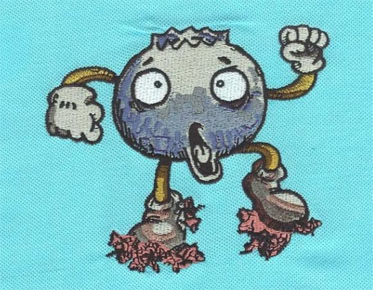Factors That Affects The Quality Of Embroidery Digitizing
There are several factors that affect
the quality of embroidery digitizing designs.
Quality is defined by how closely your digitized design matches the original
pattern and how well it looks in embroidery on different fabrics. When
digitizing designs, many important factors affect quality. There are several
things to consider, from the software you are using to the fabric you are
embroidering on. This article explains how these factors affect the final
product and what to do to make your digitized design look as good as possible.
How does digitization affect
embroidery quality?
When digitizing, many factors can
affect the quality of embroidery. Stitch density, stitch length, and lining are
just a few factors. Let's see how this affects the quality of embroidery.
Stitch density is the number of
stitches per inch in the design or the number of stitches added or discarded.
The higher the stitch density or the more stitch included in the design, the
higher the quality, the lower the stitch density, the fewer stitch included in
the design and the lower the quality.
Stitch length is actually the length
of each stitch in the design. The longer the seam length, the higher the
quality. The shorter the seam length, the lower the quality.
Lining is an important factor in
determining the quality of embroidery. The lining stabilizes the embroidery and
prevents wrinkles and slippage. The better the substrate, the higher the
quality of the embroidery.
How to prepare for digitizing?
When preparing for the transition to digitizing,
several factors should be considered, including:
The quality of the design, the size of
the design, the fabric to be embroidered. Let's take a closer look at each of
these factors.
Design quality is very important
because it affects the look of the embroidery. Poor design can result in uneven
stitching and a messy overall appearance. On the other hand, a good design will
have a clean stitched and polished overall appearance.
Pattern size also affects embroidery
quality. If the design is too small, the stitch will be hard to see and the
overall effect may be lost.
Finally, the fabric you embroider in
will also affect the quality of the final product. Some fabrics are more
delicate and problematic than others, and may require extra care when
digitized.
Basic concepts of digitization
When you first enter the world of
digital embroidery, you encounter a lot of jargon. Here are some of the key
terms you need to know:
Number of needles:
The number of stitches in an
embroidery design affects the price of the design and the sewing time. The more
stitches, the higher the price and the longer the sewing time.
Digitizing software:
Software for creating embroidery
designs. There are different brands and types of software available, each with
its own set of features.
Embroidery format:
This is the type of file that saves
the embroidery design. The most common and familiar formats are DST and PES.
Type of thread:
The type of thread used in an
embroidery design affects the overall look and feel of the finished product.
There are many types of thread, including polyester, viscose and cotton.
Several factors can greatly affect the
quality of embroidery digitization, from the type of thread used to the density
of the stitch. But the most important factor is the function of the digitizer.
A good digitizer will consider all these factors to produce a high quality
design. If you are looking for quality embroidery digitizing services in the
United States, check out our service. We guarantee satisfactory results.


